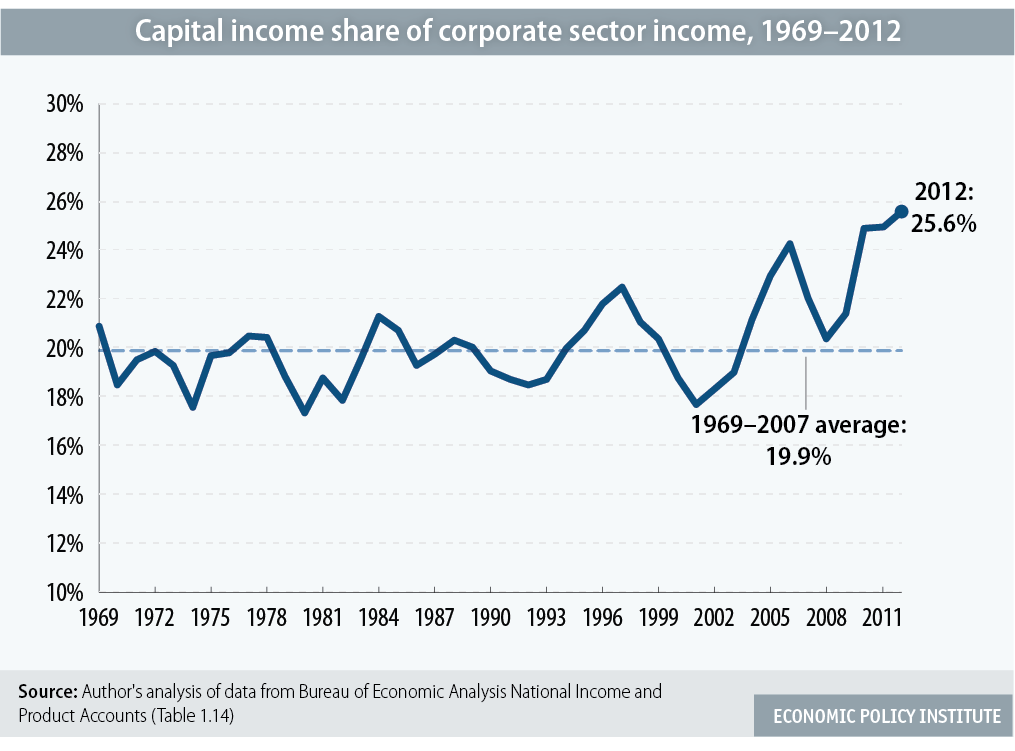Working as designed: High profits and stagnant wages
Newly released data on corporate profitability for 2012 show the continuation of historic levels of profitability despite excessive unemployment and stagnant wages for most workers. Specifically, the share of capital income (such as profits and interest, which are hereafter referred to as ‘profits’) in the corporate sector increased to 25.6 percent in 2012, the highest in any year since 1950-51 and far higher than the 19.9 percent share prevailing over 1969-2007, the five business cycles preceding the financial crisis.

This historic share of income going to profits reflects historically high returns on investments, meaning more profit per dollar of assets, as we document in The State of Working America. A higher profits share could result from an economy becoming more capital-intensive, where more assets are associated with each worker in the production of goods and services. However, the economy has become less capital-intensive since 2007 and is now only modestly more capital-intensive than it was over the preceding four decades. Profitability used to be lower when there was high unemployment, but in this downturn we have already seen the share of income going to profit exceed the high point reached in the last recovery or at any time in the last five recoveries. We now have an economy built to assure high corporate profitability even when it’s operating far below capacity and when most families and workers are faring poorly. This is further evidence that there is a remarkable disconnect between the fortunes of business and those best-off (high income households) and the vast majority.
A wonky point: some analysts choose to look at profits as a share of GDP, or the economy, but this is analytically incorrect. The profit share of GDP provides a nice shorthand method but it is flawed because there are sectors of the economy that have little capital income by their nature—government and the non-profit sector. Consequently, when these sectors expand or contract the overall share of profits in the economy shifts. There’s also the problem of the proprietary sector where the categorization of income is problematic (how much of the income obtained by the self-employed, for instance, is salary versus profit). That is why economists studying profitability (including, for instance, a paper by Martin Feldstein and Larry Summers and one by Jim Poterba) have always focused on the corporate sector. In any case, the profit (capital income) share of national income in 2011 (2012 data not yet available) was also historically high, but comparable or below the share in 1965-66, 1996-97, and 2006.
No matter how it is measured this economy has achieved something remarkable, the ability to generate large returns to owners of assets even when the economy remains far below full employment. This did not happen by accident my friends.
Enjoyed this post?
Sign up for EPI's newsletter so you never miss our research and insights on ways to make the economy work better for everyone.